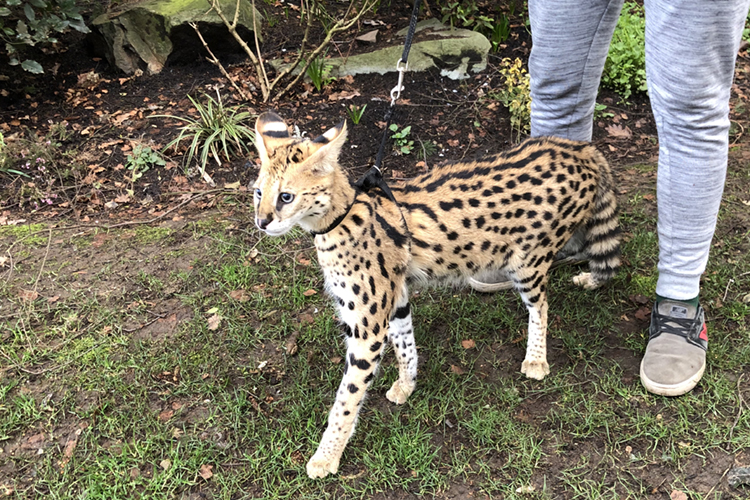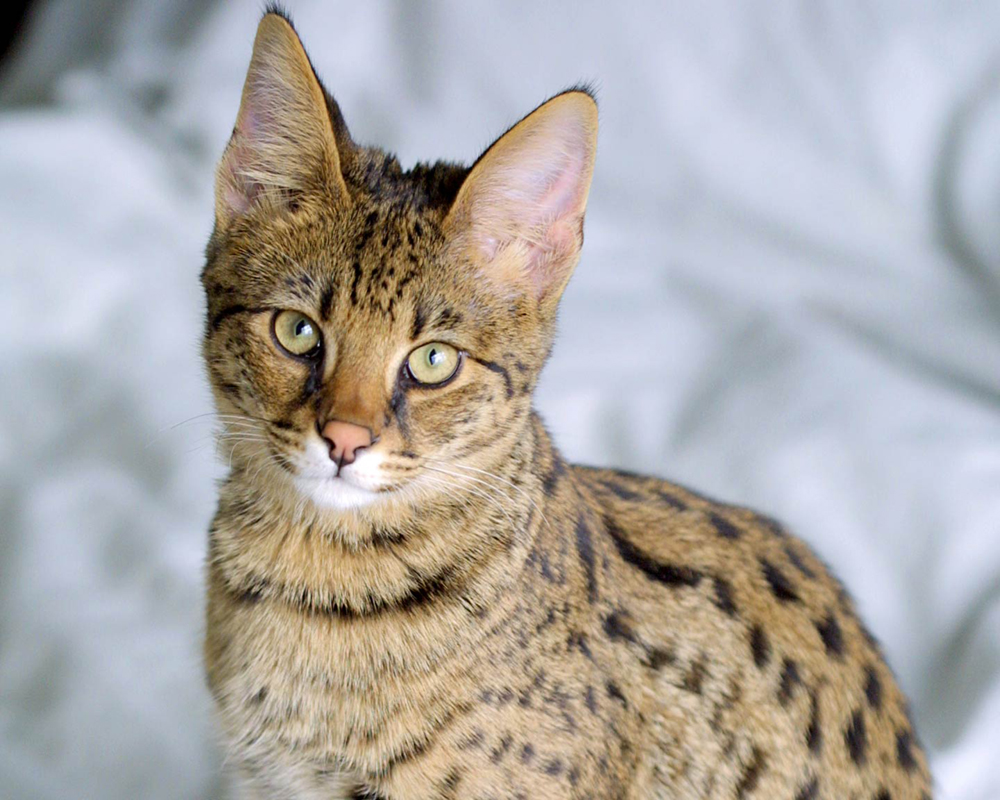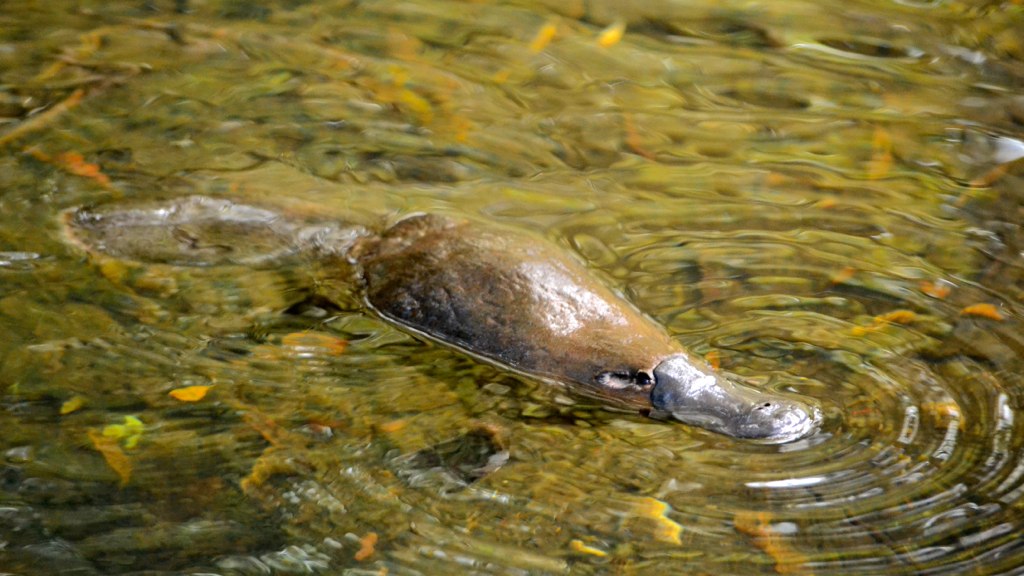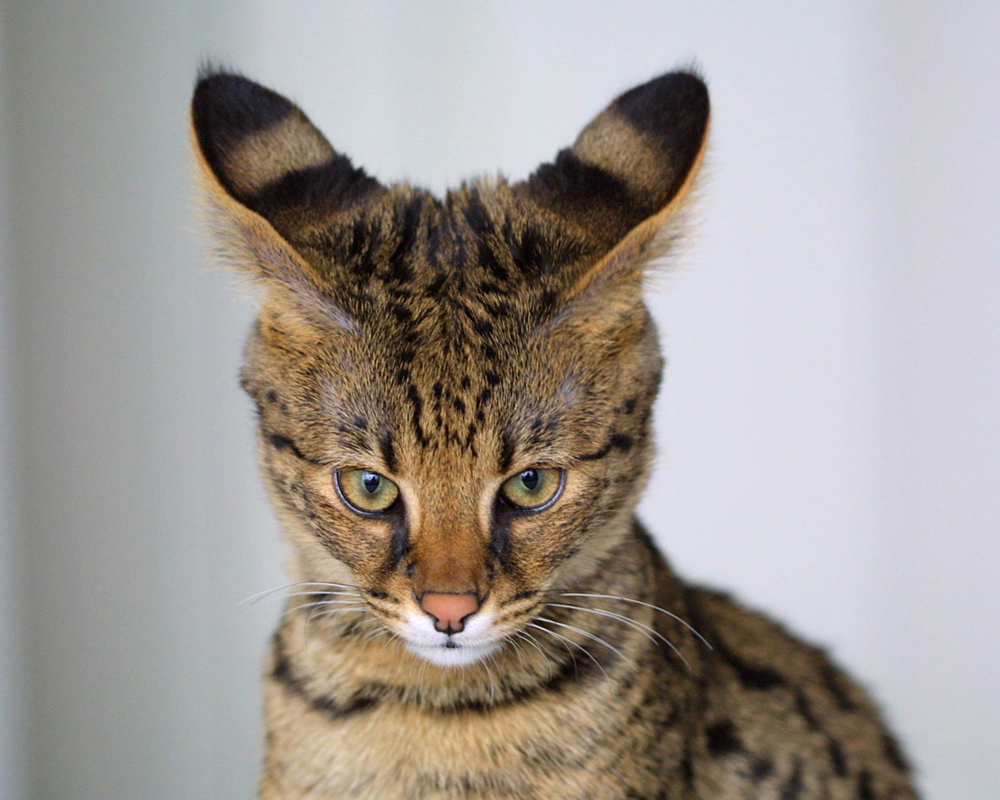
Banning savannah cats in Australia was good science
Tuesday, 22 October 2019In 2008, the Australian Government banned the importation of savannah cats to Australia, and that was a very good thing, according to a new scientific study by the Threatened Species Recovery Hub.
Savannah cats are a cross between a domestic cat and the much larger African serval, bred in some countries for the designer pet industry. While domestic
cats are usually around 4 kilograms, savannah cats can weigh up to 11 kilograms.
 Savannah Cat. Photo: Jason Douglas, Public Domain, Available on Wikimedia Commons
Savannah Cat. Photo: Jason Douglas, Public Domain, Available on Wikimedia Commons
In 2008 a commercial pet breeder applied to import savannah cats to Australia, sparking a rapid government review and public consultation followed by amendments to the Environment Protection and Biodiversity Conservation Act.
 Savannah Cat. Photo: Jason Douglas, Public Domain, Available on Wikimedia Commons
Savannah Cat. Photo: Jason Douglas, Public Domain, Available on Wikimedia Commons
In 2008 a commercial pet breeder applied to import savannah cats to Australia, sparking a rapid government review and public consultation followed by amendments to the Environment Protection and Biodiversity Conservation Act.
At the time the Australian Government had limited information to assess the risks but applied the precautionary principle. The new study, published in
the scientific journal Animals, presents a framework for making evidence-based assessments of risk, and demonstrates the very real and significant
risk that savannah cats would have posed to Australian wildlife.
Lead researcher Professor Chris Dickman from the University of Sydney said that Australia’s climate and environment is very suitable for savannah cats
and, if they had escaped or been released, they could have free roamed across 97% of the country.
“This research assessed the impact that wild populations of savannah cats would have had on Australian mammals. Reptiles and birds would also have been
affected,” said Professor Dickman.
“We assumed that savannah cats had similar ecology, diet and hunting behaviour as their parent species.
“We found that while domestic cats already prey on at least 151 species of native mammals in Australia, an additional 29 native mammal species would have
come under threat from savannah cats, which can hunt prey twice the size.
“Mammal species that live in trees, in dense vegetation and in swampy areas would also have come under more pressure. “Over 90% of Australia's native terrestrial
mammal species would have been at risk.


Platypus are not susceptible to predation by Australia's feral domestic cats but would have been at high risk from savannah cats. Photos: Klaus CC BY-SA 2.0
Available on Flickr
“Cats already kill over two billion reptiles, birds and mammals per year in Australia, mostly natives, and those numbers would have increased dramatically
if savannah cats had established in the wild.
“At the time of the assessment the government assessed the risk of savannah cats establishing in the wild as high due to an extreme risk of escape or release.
According to wildlife shelters in the United States, savannah cats are frequently surrendered or released due to wild-serval-like behaviours that the hybrids
can exhibit. These can include aggression to humans and other pets and urine-spraying to mark territory boundaries.
Savannah cats can also jump up to 2.5 metres from a standing position and often learn how to open doors, so they can be hard to contain.
 Savannah Cat (close up). Photo: Jason Douglas, Public Domain, Available on Wikimedia Commons
Savannah Cat (close up). Photo: Jason Douglas, Public Domain, Available on Wikimedia Commons
“Savannah cats are legal in the United States, however native wildlife on that continent evolved with native cats. Australian wildlife is far more vulnerable to cat predation.
 Savannah Cat (close up). Photo: Jason Douglas, Public Domain, Available on Wikimedia Commons
Savannah Cat (close up). Photo: Jason Douglas, Public Domain, Available on Wikimedia Commons
“Savannah cats are legal in the United States, however native wildlife on that continent evolved with native cats. Australian wildlife is far more vulnerable to cat predation.
“This research shows that Australian wildlife dodged a bullet, and that government regulation can be very effective. The results strongly validate the
Australian Government’s decision to ban savannah cats from Australia.
“The assessment framework we have developed could also be used to assess the likely risks of any future proposals to introduce hybrid designer pets.”
The Threatened Species Recovery Hub is a collaboration of leading Australian research institutions to undertake science to support the recovery of Australia’s
threatened species. It receives funding from the Australian Government’s National Environmental Science Program.
See Journal article: Dickman, C.R.; Legge, S.M.; Woinarski, J.C.Z. Assessing Risks to Wildlife from Free-Roaming Hybrid Cats: The Proposed Introduction of Pet Savannah Cats to Australia as a Case Study. Animals 2019, 9, 795. DOI: https://doi.org/10.3390/ani9100795
For further information contact Jaana Dielenberg, TSR Hub Communication Manager, 0413 585 709 j.dielenberg@uq.edu.au
See Journal article: Dickman, C.R.; Legge, S.M.; Woinarski, J.C.Z. Assessing Risks to Wildlife from Free-Roaming Hybrid Cats: The Proposed Introduction of Pet Savannah Cats to Australia as a Case Study. Animals 2019, 9, 795. DOI: https://doi.org/10.3390/ani9100795
Top image: Savannah Cat. Photo: Sherwood411, CC BY NC 2.0 Available on Flickr.